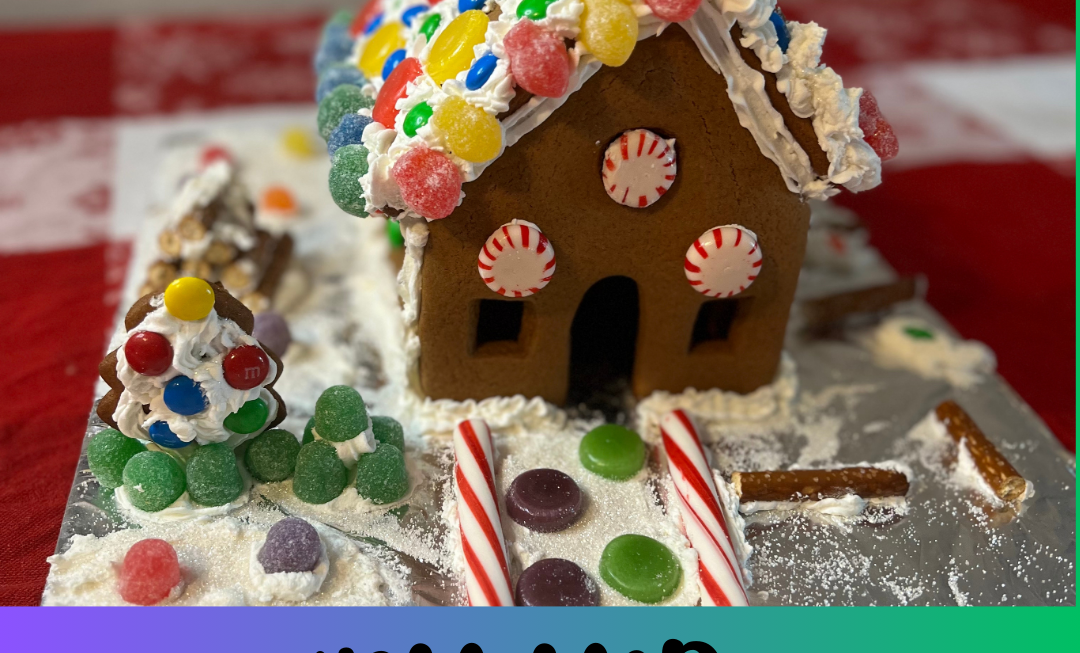[wprm-recipe-jump]
During the pandemic, a lot of people got into baking bread. We didn’t get into baking then, but over the past few months, we’ve started baking. It started with hubby wanting to learn how to make pizza dough. That pizza dough led into bread, and now we’re making a different loaf of bread almost every day it seems.
All of this baking has come with the purchase of a lot of different flours, and cookbooks. We found one cookbook, The Italian Baker by Carol Field, and EVERYTHING we have made out of that book has looked, and tasted like it belongs in a bakery. We’ve made so many Italian breads, I don’t think I could choose just one that I liked best. Well, maybe the baguettes… I can eat those pretty much right out of the oven, and nothing beats hot, fresh bread!
View this post on Instagram
The first loaf we tried was a Pane di Como, or Como Bread. It’s a simple, white bread with a crispy crust and the inside is soft, with lots of holes! Next, we made a semolina bread – Pane Siliciano. This one might be our favorite. I guess it’s not technically a Pane Siliciano since we don’t add the sesame seeds, but whatever it is, it’s delicious! These simple Italian breads cook on a pizza stone dusted with just a little bit of cornmeal. If you don’t have a pizza stone, you can cook the bread on a sheet pan lined with parchment.

This recipe is for Pane Tipo Altamura, or Semolina Bread, which used a biga starter. While making bread, the biggest thing we have learned is to have patience and just let the bread rise, and WAIT. Waiting is the hard part, but you can do it.
How To Make Italian Bread – Pane Tipo Altamura (Semolina Bread)
Recipe Adapted from The Italian Baker by Carol Field
Tools & Equipment Needed
There are so many different things you could get when it comes to bread baking. Here is a list of all of the equipment that helps make bread baking easier. If you’re just getting started, making sure that you have a digital scale, a cooling rack and a dough scraper will be your most important tools.
- digital scale
- dough scraper (metal or plastic)
- pizza stone (for baking)
- mixing bowls – I like these ones, they have lids which makes it easier for proofing and letting bread rise
- stand mixer
- bread lame
- banneton – this one has the banneton, lame and a dough scraper for only $15
- cooling rack
- bread knife
- flour sack towels
- pizza peel
- spray bottle
- wood spoons (optional, but nice to have)
Gather Ingredients
We bought some imported yeast and good flour to make the bread. It’s only a few dollars extra (especially when you buy in bulk) for the ingredients, but I really think that it made a difference, but if you’re just getting started and not ready to spend the extra on imported Italian flour, just use what is at your local grocery store.
- active dry yeast
- bottled water – or filtered water from your fridge, just not tap water
- unbleached all-purpose flour – we like King Arthur or Bob’s Red Mill
- milk
- salt
- olive oil
- cornmeal
- very fine semolina flour – we like the Caputo brand
Make The Biga Starter
Most Italian breads start with a biga. This is a universal bread starter made from flour, water and yeast. Since we started baking bread, we have kept some biga in our fridge at all times. In Italy, bakers save saltless dough from the previous day’s bake to start a new dough. If you like sourdough, let the biga rest 24-72 hours.
It is not a typo, you will see water on the ingredient list twice, in two different measurements.
- ¼ tsp active dry yeast
- ¼ cup warm water
- ¾ cup + 1 tbsp + 1 tsp water, room temperature
- 2 ½ cups (330 g) unbleached all purpose flour
Stir the yeast into the warm water and let stand until creamy, about 10 minutes. Stir in the remaining water and then the flour, 1 cup at a time.

By Hand: Mix with a wooden spoon for 3-4 minutes.
By Mixer: Mix with the paddle attachment on the lowest speed for 2 minutes.
Remove dough to a large, lightly oiled bowl, cover with plastic wrap, and let rise at a cool room temperature for 6-24 hours. The starter will triple in volume and still be wet and sticky when ready.

Start Making Bread – Makes 2 Oval Loaves
- 1 ¼ tsp active dry yeast
- ¼ cup warm water
- 1 ¾ cup water, room temperature
- 1 ½ cups (375 g) biga
- 5 ½ cups very fine ground semolina
- 1 tbsp (15 g) salt
- unbleached all-purpose flour, for kneading
By Hand: Stir the yeast onto the ¼ cup warm water and let stand until creamy – about 10 minutes. Mix the dissolved yeast, remaining water and biga starter in a large mixing bowl, squeezing the biga starter between your fingers to break it up and stirring vigorously with a wooden spoon. Mix the semolina and salt, and stir, 2 cups at a time into the yeast mixture. Plunge in with your hands when the mixture becomes too stiff to stir.
Knead on a surface sprinkled with all-purpose flour until the dough is smooth, elastic, slightly moist and very blistered – about 10 minutes. Slam the dough on the surface while kneading to develop the gluten. Follow next steps for first rise.
By Mixer: Stir the yeast into 2 cups warm water in a large mixer bowl. Let stand about 10 minutes, until creamy. Add the biga starter and mix with the paddle attachment until the biga is broken up and the liquid is a chalky white. Add the semolina flour and salt, and mix until the dough pulls away from the side of the bowl – about 2 minutes. DON’T add extra water, although you’ll be tempted, as the flour absorbs moisture slowly. If after mixing for 2 minutes, it still seems dry, mix in 1 tsp water at a time.
Change to the dough hook, and knead 2 minutes on low, and then 3-4 minutes on medium speed. The dough should be smooth to the touch, but very blistered on top. It will feel like silly-putty, and be slightly tacky even when fully kneaded. Knead lightly by hand on a surface floured with all-purpose flour. Follow next steps for first rise.
First Rise – 1 ¾ to 2 Hours
Place the dough in a lightly oiled bowl, cover with plastic wrap, and let rise until doubled, about 1 ¾ to 2 hours.
Shaping & Second Rise – 45 Minutes to 1 Hour
Turn dough out onto a lightly floured surface and cut the dough in half. Shape each piece into a round, and then to an oval that is higher and plumper in the center and slightly tapered at the ends. Make a deep slash down the middle of each loaf with a bread lame or a razor. Let rise, cut side down, and covered with a towel, on a well floured board or peel, until doubled in size – about 45 minutes to 1 hour.
Baking Bread
Thirty minutes before baking, heat the oven with a pizza stone in it to 400° F. Turn the dough over and cut the slash again if it has closed during the rise. Sprinkle the stone with cornmeal and gently slide the loaf, cut side up, onto the stone.
Bake 35 minutes. Cool on a rack.


Italian Bread

Semolina Bread
- Kitchen Scale
- Dough Scraper
- Flour Sack Towels
- Bread Knife
- Cooling Rack
- Lame
- Mixing Bowls
- Pizza Stone
- Pizza Peel
- Stand Mixer
For Biga Starter
- 1/4 tsp active dry yeast
- 1/4 cup warm water
- 3/4 cup room temperature water
- 1 tbsp room temperature water
- 1 tsp room temperature water
- 2 1/2 cups unbleached all-purpose flour (500 grams)
For Semolina Bread
- 1 1/4 tsp active dry yeast
- 1/4 cup warm water
- 1 3/4 cup room temperature water
- 1 1/2 cups biga starter (375 grams)
- 5 1/2 cups semolina flour (750 grams)
- 1 tbsp salt (20 grams)
- unbleached all-purpose flour (for kneading)
For Biga Starter
-
Stir the yeast into the warm water and let stand until creamy, about 10 minutes. Stir in the remaining water and then the flour, 1 cup at a time.
By Hand: Mix with a wooden spoon for 3-4 minutes.
By Mixer: Mix with the paddle attachment on the lowest speed for 2 minutes.
Remove dough to a large, lightly oiled bowl, cover with plastic wrap, and let rise at a cool room temperature for 6-24 hours. The starter will triple in volume and still be wet and sticky when ready.
For Semolina Bread
-
By Hand: Stir the yeast onto the ¼ cup warm water and let stand until creamy – about 10 minutes. Mix the dissolved yeast, remaining water and biga starter in a large mixing bowl, squeezing the biga starter between your fingers to break it up and stirring vigorously with a wooden spoon. Mix the semolina and salt, and stir, 2 cups at a time into the yeast mixture. Plunge in with your hands when the mixture becomes too stiff to stir.
Knead on a surface sprinkled with all-purpose flour until the dough is smooth, elastic, slightly moist and very blistered – about 10 minutes. Slam the dough on the surface while kneading to develop the gluten. Follow next steps for first rise.
By Mixer: Stir the yeast into 2 cups warm water in a large mixer bowl. Let stand about 10 minutes, until creamy. Add the biga starter and mix with the paddle attachment until the biga is broken up and the liquid is a chalky white. Add the semolina flour and salt, and mix until the dough pulls away from the side of the bowl – about 2 minutes. DON'T add extra water, although you'll be tempted, as the flour absorbs moisture slowly. If after mixing for 2 minutes, it still seems dry, mix in 1 tsp water at a time.
Change to the dough hook, and knead 2 minutes on low, and then 3-4 minutes on medium speed. The dough should be smooth to the touch, but very blistered on top. It will feel like silly-putty, and be slightly tacky even when fully kneaded. Knead lightly by hand on a surface floured with all-purpose flour. Follow next steps for first rise.
-
First Rise:
Place the dough in a lightly oiled bowl, cover with plastic wrap, and let rise until doubled, about 1 ¾ to 2 hours.
-
Shaping & Second Rise:
Turn dough out onto a lightly floured surface and cut the dough in half. Shape each piece into a round, and then to an oval that is higher and plumper in the center and slightly tapered at the ends. Make a deep slash down the middle of each loaf with a bread lame or a razor. Let rise, cut side down, and covered with a towel, on a well floured board or peel, until doubled in size – about 45 minutes to 1 hour.
-
Baking Bread:
Thirty minutes before baking, heat the oven with a pizza stone in it to 400° F. Turn the dough over and cut the slash again if it has closed during the rise. Sprinkle the stone with cornmeal and gently slide the loaf, cut side up, onto the stone.
Bake 35 minutes. Cool on a rack.
As an Amazon Affiliate, I may earn a small commission for items purachased through links in this post.


